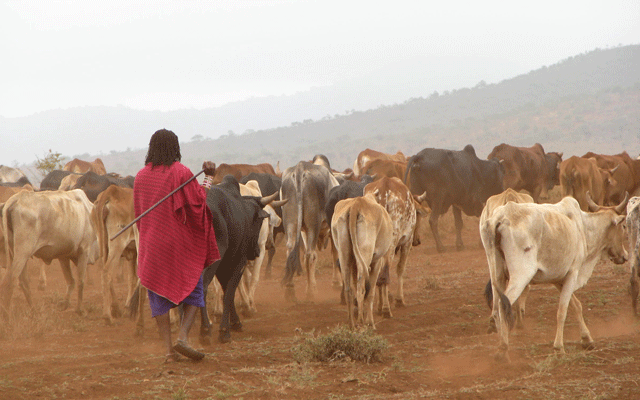THE
DROUGHT EXPERIENCE WITH THE MAASAI
The
last few months have been very hard on the Maasai. It’s
nearly a year without rain. Many people lost lots of cows to
the ongoing drought. Most villages are empty because the cattle
moved hundreds of miles away in search for better pasture and
water.

A
significant number of Maasai nomads from Kenya moved their herds
of cattle to the Serengeti plains and Simanjiro area in Tanzania.
The Maasai from Merrueshi, Mbiirikani, Poka, Ngama and Kenyawa
moved eastward direction to Kibwezi, Tsavo West, Voi, and into
Mombasa region. These places are hundreds of miles away from
home.
The
current drought is a big surprise to all Maasai. For generations
droughts never happened during the months of January, February,
March and April. Maasai elders, who are traditionally in tuned
with regional climate and environment, are puzzled by this rapidly
changing climate. Droughts are happening so often and lasting
longer than usual.
According
to a Maasai elder “it is uncertain whether the pastoral
way of life can continue when looking at the current climate.
The Maasai might have to find an alternative lifestyle different
from cattle herding.” Yet it is unclear what that alternative
lifestyle will look like for people whose livelihood dependent
on cattle herding for centuries.
Traditionally,
cattle are the backbone of the Maasai economy. Healthy cattle
are sold for food, clothing, and school fees for children. When
the cattle are weak Maasai income goes down. Weak cattle imposed
social and economic stress to every Maasai family.
For
the last three months, for example, many school children stayed
at home due to lack of school fees and food. Nearly all schools
in Maasai land suspended the lunch program because of the drought.
The situation makes it difficult for children to attend school
on regular basis. In addition, several schools had to close
early for spring break due to the drought. Meanwhile Maasai
land remains dry, dusty, and extremely hot. The Maasai are uncertain
for when the rains will return. Click
to see a few pictures from the drought experience in Maasai
land


